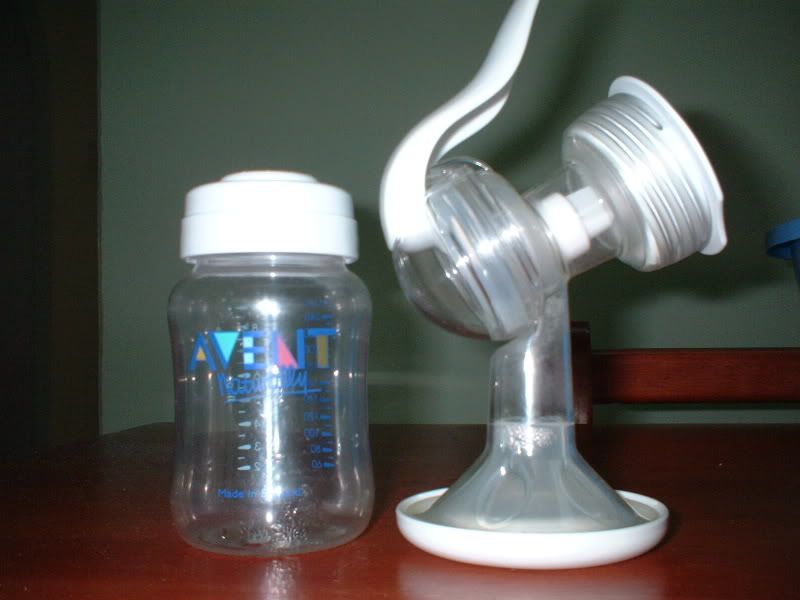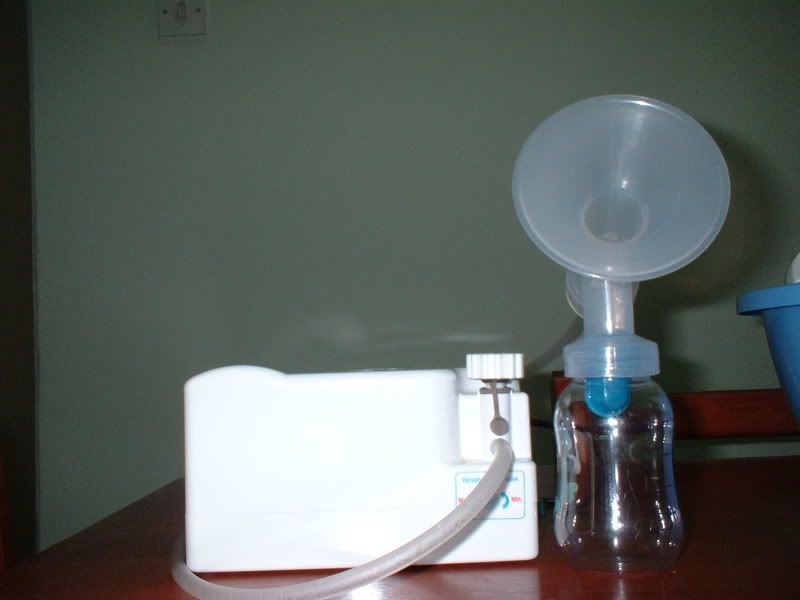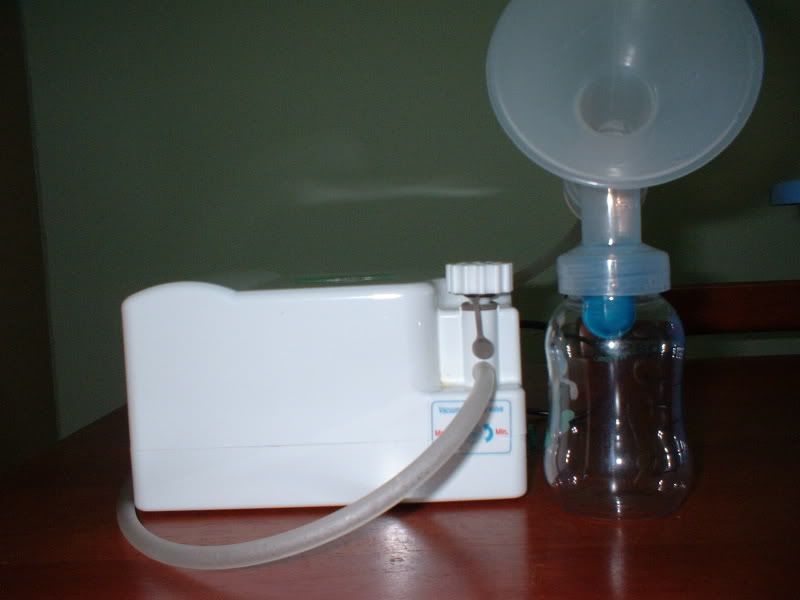if it has been taken away from them at the beginning.
Breast-feeding is not a choice,
but an obligation to the choice.
Give your child the freedom of choice
Quick Search

Cari@susuibu.com

Tuesday, July 29, 2008
Berbaloikah penggunaan slow cooker?
Bagi saya, YA
Saya hanya perlu mencuci beras dan bahan-bahan lain dan dimasukkan ke dalam 'slow cooker', masukkan air secukupnya, ON switch, pada waktu malam sebelum tidur.
Keesokkan pagi, bubur susah tersedia di dalam slow cooker
'Slow cooker' juga sesuai untuk memasak sup.Kaedahnya sama. Mula memasak pada waktu malam dan 'ready' pada keesokkan paginya.
Bolehkah ibu yang menyusukan anak hamil lagi?
Tiada sebarang halangan untuk seorang ibu yang menyusukan anak untuk kembali hamil. Namun seelok-eloknya dijarakkan selama 2 tahun (hikmah kenapa Al-Quran menyebut susukanlah anak sehingga 2 tahun bagi menyempurnakan penyusuan)
Apabila sudah 2 tahun dan hamil semula, ibu dan anak juga sudah bersedia.
Badan ibu juga sudah bersedia untuk hamil lagi dan tidak akan membebankan ibu.
Insya Allah
Namun ada juga ibu yang tidak hamil dalam tempoh penyusuan anak.
Bagi saya jika dalam tempoh 2 tahun anda tidak hamil maka itulah yang terbaik.
Dan ramai juga ibu-ibu menyusukan anak hamil sebelum anak berusia 2 tahun.Rezeki masing-masing
Pada pandangan saya, memberhentikan penyusuan susu ibu bagi anak yang berusia bawah 2 tahun atas alasan ingin hamil lagi adalah tidak relevan.
Adakah anda mendapat jaminan 100% jika anda tidak susukan anak anda, anda akan hamil dengan segera?
Tiada jaminan bukan?
Dan bagi ibu yang hamil, anda juga boleh menyusukan anak anda/meneruskan penyusuan selagi tidak memudaratkan anda, bayi yang dikandung dan anak yang disusukan.
Jika ibu mengalamai 'morning sickness' yang melampau sehingga memberi kesan tidak baik terhadap dirinya, anak dalam kandungan dan anak yang disusukan, eloklah dihentikan proses penyusuan.
Dapatkan nasihat pakar anda.
Monday, July 28, 2008
cooler bag & avent liner for storing EBM
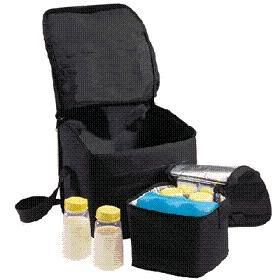
Saya guna cooler bag ini
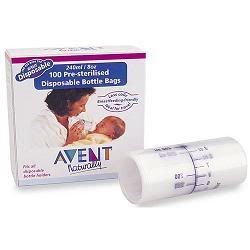 Dan EBM disimpan didalam avent liner.
Dan EBM disimpan didalam avent liner.Masukkan EBM dan diikat dengan getah pengikat(macam peniaga pasar malam guna.Anda juga disyorkan meniru cara mereka mengikat.)
Avent ISIS manual
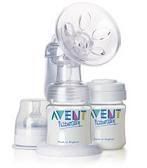
botol bersudu
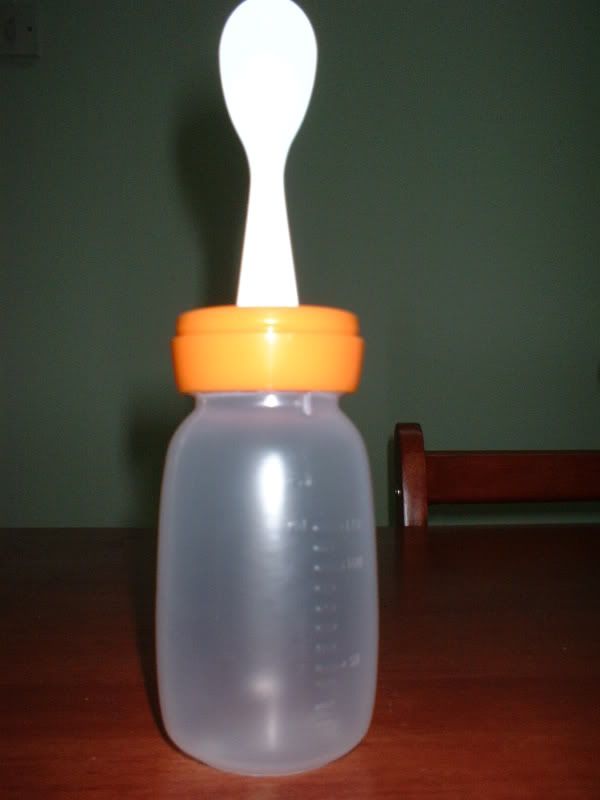

Monday, July 14, 2008
baby and fit
Pernahkah anak anda kena semua ini.
Selalunya berlaku kerana suhu badan yang mendadak/high temperature.
ataupun disebabkan oleh hentakkan.
Febrile convulsions occur in young children when there is a rapid increase in their body temperature. It affects up to 1 in 20 children between the ages of one and four but can affect children between six months and about five years old.
Children who are at risk may naturally have a lower resistance to febrile convulsion than others.
Jika anak anda demam panas,
jelum/basahkan badannya dengan air sejuk.
Elakkan suhu badannya naik mendadak.
Jika anak anda kena fit,
lakukan langkah2 berikut
- Jangan panik
- baringkan dia ditempat lapang, selamat dari segala bahaya
- jangan sekali-kali betulkan kaki tangannya
- fit selalunya mengambil masa 3 minit ataupun kurang.
- Jika berlarutan cepat-cepat bawa berjumpa doktor.
- Bawa jumpa doktor.
Thursday, July 10, 2008
reverse cycling nursing
Dalam perkataan lain, tak berapa suka minum EBM pada siang hari tapi 'mengempeng' bila malam
-Normal untuk breastfeed baby yang ibunya bekerja
-Anak saya memang reverse cycling type
Alhamdulillah membesar juga dia.
Di bawah ni ada artikel tentang reverse cycling nursing
Reverse Cycling
By Kelly Bonyata, BS, IBCLC
http://www.kellymom.com/bf/normal/reverse-cycling.html
What is reverse cycling?
Reverse cycling is when baby nurses frequently at night and less frequently during the day.
Why do some babies reverse cycle?
Newborns may reverse cycle in the early days or weeks simply because they have their days and nights mixed up.
Distractible (and/or very active) babies or toddlers may nurse more at night to make up for missed or shortened nursing sessions during the day.
If mom is very distracted or busy during the day, baby may nurse more at night to make up for missed or shortened nursing sessions, or simply to get more uninterrupted time with mom.
If mom is away from baby during the day, baby may take just enough milk (by bottle or cup) to "take the edge off" his hunger, then wait for mom to return to get the bulk of his calories. Baby will typically nurse more often and/or longer than usual once mom returns. Some mothers encourage reverse cycling so they won't need to pump as much milk. Reverse cycling is common for breastfed babies who are away from mom part of the day, especially those just starting out with the bottle.
Tips for handling reverse cycling
General coping tips for interrupted sleep:
Sleep late or go to bed early when possible. When you're at home with baby, nap when your baby naps.
Keep baby as close as possible during the night to maximize sleep for everyone. Some options are to have baby in bed with you, in a bed adjoining your bed, or in a bed in the same room.
During the day, keep the lights on and go on with your normal daytime activities -- don't keep things dark and quiet where baby is sleeping. Play with and talk to baby during waking times. Wake baby to nurse every 2-3 hours.
During baby's night wakings, keep everything calm, quiet, and dark (if you need a light to breastfeed, try using a smaller light like a nightlight or closet light). At some point you may want to begin a bedtime routine (such as bath, story, breastfeeding) to signal that nighttime has begun.
When mom is busy or distracted:
Consider using a sling or other baby carrier so that baby can be with you and breastfeed while you go about your day.
Be aware of baby's typical breastfeeding routine, and remember to watch for baby's cues on busy days -- this is easiest when baby is close by.
Be aware that after a really busy day (we all have them!), your child may need some one-on-one time with mom to breastfeed and reconnect.
If baby is reverse cycling and taking very little milk when mom is away at work:
Be patient. Try not to stress about it. Consider it a compliment - baby prefers you!
Use small amounts of expressed milk per bottle so there is less waste.
If you're worrying that baby can't go that long without more milk, keep in mind that some babies sleep through the night for 8 hours or so without mom needing to worry that baby is not eating during that time period. Keep an eye on wet diapers and weight gain to assure yourself that baby is getting enough milk.
Ensure that baby has ample chance to nurse when you're together.
If you prefer to pump less milk while you're away from baby, you may choose to encourage baby to reverse cycle.
From
http://parenting.ivillage.com/baby/bbreastfeed/0,,3x9c,00.html
Question
Now that my five month old eats solid foods, he won't take bottles of breastmilk at all from his caregivers. Instead, he prefers to wait until I come home from work and then nurse every two hours all night long. I work three long days a week, but I do nurse him throughout the other days when I'm home. Is it okay for him to go 12 hours with only two ounces of breastmilk mixed in with cereal in addition to jars of veggies?
Answer
Your baby is practicing reverse cycle nursing. This is quite commonly seen in babies of working moms. Basically he has just switched his schedule to coordinate with yours.
I can understand that you'd like to begin getting more sleep at night. But if your little guy is encouraged to begin sleeping through the night, he will be going for two long periods each work day without your milk. This can amount to more than 16 hours. That's too long, and I would be concerned if that were the case. Since your baby is refusing virtually all breastmilk during the day, it is very important that he be given access to nursing as needed when the two of you are together.
If you are basically sleep-deprived but otherwise happy with your nursing relationship, begin to think about some creative ways to deal with your lack of sleep. Do you share sleep with your little one? Many working moms find that this helps them to be more rested during the day, even when their baby is a frequent nighttime nurser. You also might want to take a nap when you return home from work. This can help you to feel more rested in the evening. You might also want to rearrange your schedule so you have time in the evening to "cocoon" with your baby and the rest of your family. Once you allow yourself this time, then you no longer need to feel guilty for getting comfy, putting up your feet and just relaxing on your work nights.
I wouldn't give up offering your baby your milk. While your baby is in daycare, you might want to ask your baby's caregiver to offer some of your expressed milk in a sippy cup. It may be the bottle that your baby dislikes. Start out with one ounce at a time, so you will not be wasting any of your milk if your baby continues to refuse.
Your baby will probably get thirsty while you're at work. In addition to other solid foods that have already been safely introduced to your baby, you can also offer juice, such as apple or pear, which is diluted (one part juice to 2 parts water.) My very best wishes!
Wednesday, July 9, 2008
baby dan walker
Diperolehi dari internet dari hasil 'search' danger of baby walker.
artikel 1
The Dangers of Baby Walkers
The American Academy of Pediatrics (AAP) feels that walkers should be banned from the United States because:
baby walkers put children at risk for injury and
there are no clear benefits from using a baby walker.
From 1989 to 1993 there were 11 deaths involving a baby walker. Each year over 8000 children are treated in hospital emergency rooms for walker-related injuries. Many more children are injured and go to their health care provider's office. Walker injuries can be serious, such as skull fractures, head injuries causing bleeding inside the head, broken legs and arms, and burns.
FACT: Baby walkers do not help your baby to walk earlier. In fact, they often delay walking.
FACT: A baby in a walker can move at a speed of 3 feet per second. This is much faster than a baby can move on his own.
FACT: Gates do not prevent babies from tumbling down stairs in walkers. Children can take the gate down or the baby walker can knock the gate loose.
FACT: Baby walkers put children at increased risk for burns, poisonings, and drownings. This is because the child can move about faster and reach dangerous objects.
FACT: Most baby walker injuries happen while at least one parent is at home watching the child.
Ways to Keep Your Child Happy
Children can be entertained in other ways or placed in a safer piece of equipment. Playpens, stationary activity centers, infant swings, and high chairs are other ways to keep your child safe and happy. Be sure to use a safety belt if you put your child in a high chair or swing.
Artikel 2
Get out your camera! Your baby seems to be on the verge of taking her first few steps. Like many parents, you may be inclined to put her in a baby walker to encourage her.
You will be making a mistake. Baby walkers can put your child at danger.
The National Association of Children's Hospitals and Related Institutions (NACHRI) and the American Academy of Pediatrics (AAP) have developed a fact sheet to inform parents about the dangers of baby walkers.
Most parents are not aware that baby walkers can be very dangerous. Since 1973, 34 children have died because of injuries sustained in walkers. Baby walker accidents send more than 25,000 children to the emergency room each year. Children in baby walkers can:
- Roll down stairs. (This is the most common way children get hurt.)
- Get burned. (The child may be able to reach a hot item on the table or stove.)
- Drown. (The child can roll into a pool, or fall into a bathtub or toilet.)
- Be poisoned. (A child in a walker may be able to reach poisonous items that you thought were out of reach.)
- Be harmed in other ways. (Walkers can delay crawling, sitting and walking in some children.)
- Trick you. (A child in a walker can move more than three feet in a second, making him or her able to go faster than you can when trying to prevent an accident.)
So what should you do? NACHRI and AAP suggest that you replace your baby walker with a play table that has a seat, a playpen, an infant swing or a high chair.
Your child's safety is your number-one concern. Don't let a baby walker be the cause of an accident to your precious child.
Artikel 3
Baby walkers are responsible for injuring 4,000 children a year and should be banned, say physiotherapists.
They also claim that baby walkers disrupt the ability of children to develop walking and visual skills, and stop them from properly exploring their surroundings.
A motion calling for a ban was overwhelmingly backed at the Chartered Society of Physiotherapists' (CSP) annual conference in Eastbourne.
Walkers are used by more than 250,000 babies in the UK.
Physiotherapist Lynda Rowe said: "The CSP has already highlighted the potential dangers of baby walkers, both in the media and amongst MPs.
"New research from the USA has shown that the use of baby walkers can interfere with babies' development of visual-motor skills and also deprive them of the learning activities afforded by exploration."
Studies have shown that children who have used baby walkers take longer to sit upright, crawl and walk.
A recent study also found that babies who had been in walkers did not perform as well in simple mental tests.
Ms Rowe said 4,000 babies a year in the UK were hurt in the walkers, with injuries from burns and grazes to head injuries.
She said: "Parents buy baby walkers because they believe they will keep their children safe and help them to learn to walk.
"Physiotherapists know this is not the case and we are calling on the CSP to join forces with other health organisations to launch a campaign to have them banned."
Tuesday, July 8, 2008
rejecting fresh milk
Jadi sekarang kami bekalkan dia
- mini milo
- yakult drink
Pada pandangan saya parents zaman sekarang haruslah lebih terbuka.
Jangan terlalu bergantung kepada susu formula.
Jika anak sudah berusia 2 tahun sudah boleh berikan susu segar (kanak-kanak satu tahun ke atas sudah boleh minum susu segar yang didalam kotak yang dijual di supermarket ataupun yang segar dari ladang ikut kesesuaian)
Jika anak menolak susu segar, boleh cuba berikan minuman bersusu yang lain. Yang mana tidak terlalu 'ada rasa susu'
Jika anak menolak susu formula
Usah gusar. Tahukah anda rasa dan bau susu formula jika dibandingkan dengan susu ibu atau pun susu segar amatlah amat tidak menyelerakan (pendapat peribadi)
All the best to US!

